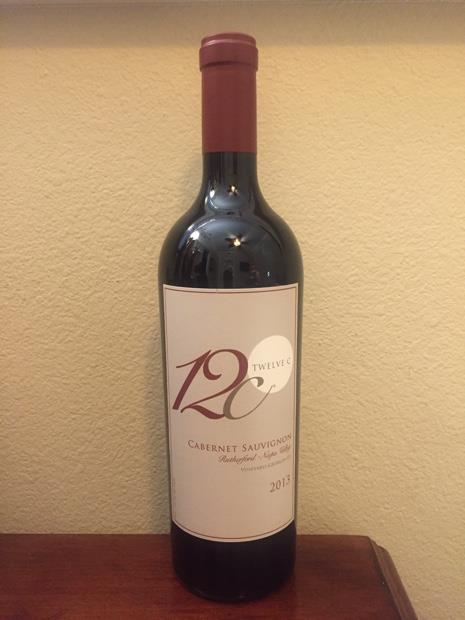
External search
Google (images)
Wine Advocate
Wine Spectator
Burghound
Wine-Searcher
Vintages
2017
2016
2015
2014
2013
2012
2011
2010
2009
2008
2007
2006
1978
N.V.
From this producer
Show all wines
All tasting notes
|
| Drinking Windows and Values |
| Drinking window: Drink between 2017 and 2025 (based on 8 user opinions) |
| Community Tasting History |
| Community Tasting Notes (average 92 pts. and median of 92 pts. in 3 notes) - hiding notes with no text | | | Tasted by Yack Man on 9/2/2018 & rated 93 points: A wine that is much improved, I would recommend it to anyone who has It laying on the rack, really in a nice place right now. Earthy elements, nice acidity and lovely ripe dark fruit. (1541 views) | | | Tasted by Yack Man on 11/2/2016 & rated 92 points: CSIMM1161, you called it on this one and I couldn't add another word to the way you sumed it up with one exception. It's approximately a year down the road since you last tasted it and it is showing a little better at this stage of maturation. I too prefer the darker blue black fruit profile. I would give it 91.5 points at this stage and it was a pop and pour. (1743 views) | | | Tasted by csimm on 10/12/2015 & rated 91 points: Definitely a young Cabernet, with vibrant fruit all wrapped up in a tightly-knit ball of verve and energy. Notes of red and black currant, red licorice, red and black cherry, pomegranate, and cedar. Finishes with dusty tannins. The 2013 is surprisingly approachable, but it is kicking out a bevy of extremely high-toned red fruit at the moment. I didn't get any of the darker fruits, nor the earth and forest floor nuances that I have previously experienced from this vineyard site.
This tasting was from a Coravin, so the amount of air this wine had was limited. However, it did not budge in the glass after about 30 minutes, even with quite a bit of swirling. The fruit is undoubtedly there, but I'm hoping the 2013 G3 (which I did not taste) ends up being a deeper, richer version.
When compared to the Myriad 2013 GIII, for example, the standard 2013 12C is certainly a red fruit Cabernet at present, whereas the Myriad touts an earthier and blacker profile (the latter being more my personal preference).
I would hold the 12C for at least a year, maybe well into the first half of 2017, in hopes that it fattens up a bit more and drops the higher-pitched red fruit blast that it currently flaunts. A complete and well constructed Cabernet, especially for the price-point (though the price went up a tick for this vintage), but I'm struggling at this stage to fully evaluate this wine due to its infancy. I'm not rushing out just yet to get more of this wine (I'd be more apt to gamble on the G3 at this point). I hope to be trying the G3 shortly and will see if that is a "bigger" wine (more my style). 91+ for now on the standard 2013 12C Cabernet. (2794 views) |
| 12c Producer websiteCabernet SauvignonCabernet Sauvignon is probably the most famous red wine grape variety on Earth. It is rivaled in this regard only by its Bordeaux stablemate Merlot, and its opposite number in Burgundy, Pinot Noir. From its origins in Bordeaux, Cabernet has successfully spread to almost every winegrowing country in the world. It is now the key grape variety in many first-rate New World wine regions, most notably Napa Valley, Coonawarra and Maipo Valley. Wherever they come from, Cabernet Sauvignon wines always seem to demonstrate a handful of common character traits: deep color, good tannin structure, moderate acidity and aromas of blackcurrant, tomato leaf, dark spices and cedarwood.
Used as frequently in blends as in varietal wines, Cabernet Sauvignon has a large number of common blending partners. Apart from the obvious Merlot and Cabernet Franc, the most prevalent of these are Malbec, Petit Verdot and Carmenere (the ingredients of a classic Bordeaux Blend), Shiraz (in Australia's favorite blend) and in Spain and South America, a Cabernet – Tempranillo blend is now commonplace. Even the bold Tannat-based wines of Madiran are now generally softened with Cabernet SauvignonUSAAmerican wine has been produced since the 1500s, with the first widespread production beginning in New Mexico in 1628. Today, wine production is undertaken in all fifty states, with California producing 84% of all U.S. wine. The continent of North America is home to several native species of grape, including Vitis labrusca, Vitis riparia, Vitis rotundifolia, and Vitis vulpina, but the wine-making industry is based almost entirely on the cultivation of the European Vitis vinifera, which was introduced by European settlers. With more than 1,100,000 acres (4,500 km2) under vine, the United States is the fourth-largest wine producing country in the world, after Italy, Spain, and France.California2021 vintage: "Unlike almost all other areas of the state, the Russian River Valley had higher than normal crops in 2021, which has made for a wine of greater generosity and fruit forwardness than some of its stablemates." - Morgan Twain-Peterson Napa Valley Napa Valley Wineries and Wine (Napa Valley Vintners)Rutherford Rutherford,
|
|




